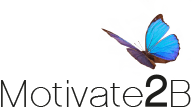Applying Leverage Points for Greater Project Success
Project, program and portfolio management are people intensive activities, subject to personalities, differing agendas, and misunderstandings. Successful managers are those who, while not immune from these challenges, correctly assess and determine how to navigate political minefields. Personal case studies, along with examples from other people and industries, provide a proven means, first to accept that these challenges will arise, and second to work through them and achieve desired outcomes.
 Leverage points are activities within a complex system where a small shift in one thing can produce big changes in everything. This idea is embedded in legend: the silver bullet, the trim tab, the miracle cure, the secret passage, the magic password, the single hero who turns the tide of history, the nearly effortless way to cut through or leap over huge obstacles. We want to know where they are and how to get our hands on them. Leverage points are points of power.
Leverage points are activities within a complex system where a small shift in one thing can produce big changes in everything. This idea is embedded in legend: the silver bullet, the trim tab, the miracle cure, the secret passage, the magic password, the single hero who turns the tide of history, the nearly effortless way to cut through or leap over huge obstacles. We want to know where they are and how to get our hands on them. Leverage points are points of power.
An example in the physical world: trim tabs are small surfaces connected to the trailing edge of a larger control surface on a boat or aircraft, used to control the trim of the controls—to counteract hydro- or aerodynamic forces and stabilize the boat or aircraft in a particular desired attitude without the need for the operator to constantly apply a control force. This is done by adjusting the angle of the tab relative to the larger surface. This reduces the work of the engine by reducing the amount of manual control necessary, as well as providing for greater efficiency by keeping the ship in the ideal orientation for the conditions.
What is the equivalent trim tab [leverage points] in the world of people and relationships? L2M2: Leadership, Learning, Means, and Motivation. Examples where these “forces” apply include:
- Speaking truth to power
- Getting past resistance to achieve results
- Working through a difficult encounter
- Applying controlled anger
- Negotiating with reluctant stakeholders
- „Selling“ and implementing a new process
The simple model of key leverage points—L2M2—may perhaps be sufficient as a recipe for greater project success. All four factors are necessary for this recipe to succeed:
Leadership is a well-articulated communication from the organization of what kind of new behavior is required and why it is required, along with a road map of the change that will take place over time.
Learning is the process of supplying the knowledge and skill necessary for individuals to carry out new behaviors. It includes learning support from the PMBOK, project leadership, and business skills, etc..
Means are all the resources necessary to carry out the behaviors, including tools, organizational policies and structures, and time.
Motivation is the formal and informal system of incentives and consequences that reinforce new behaviors. These are differentiated by role so that the required role-based behaviors are supported in all parts of the organization.
Behavior begins to change when all four factors work in concert. Without Leadership, people will not know how to apply their new knowledge and skill in concert with business strategic and tactical objectives. Without Learning, people may know what they are supposed to do from Leadership, but not know how to do it. Without Means, people may know what to do and how to do it, but not have the tools and resources to carry it out. Without Motivation, people may know what leaders want, and how to do it, and have the resources to carry it out, but simply not bother to do it.
Challenges present themselves on every project and program. An attitude of acceptance is required to get past initial paralysis and/or frustration, then to assess, design, and apply an action plan. Base actions on leverage from L2M2. Foremost, a belief in ability to prevail is required. An individual’s positive attitude that today is a good day and tomorrow will be even better provides the means to embrace and implement leverage points.
It is important to focus on people, relationships, values, and skills. Modify an approach depending on the situation, always knowing there are patterns in how nature and people respond. Tap leverage points in those patterns as a means towards greater project success. Changing a mindset to embrace change or a new approach may perhaps be the simplest and most powerful leverage point for an individual to implement. Apply a key phrase: “I can think differently about this.”
Examples and a paper on this topic are available from the PMI Global Congress North America 2014.
Randall L. Englund, Englund Project Management Consultancy, www.englundpmc.com
